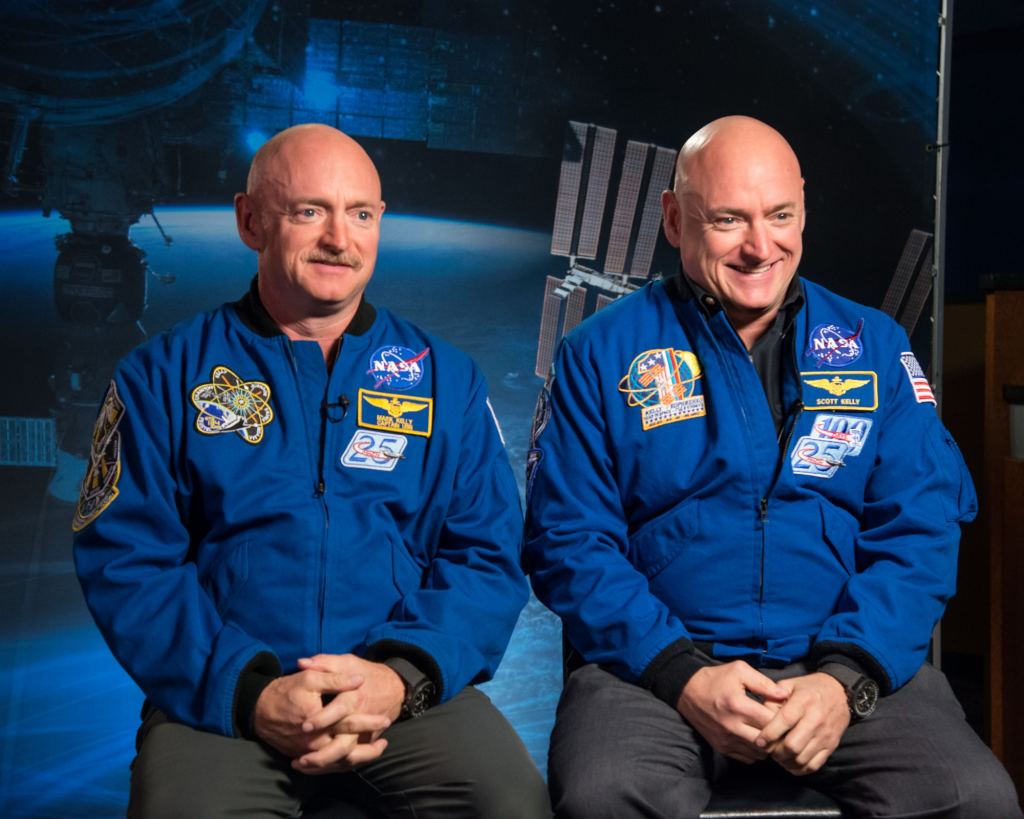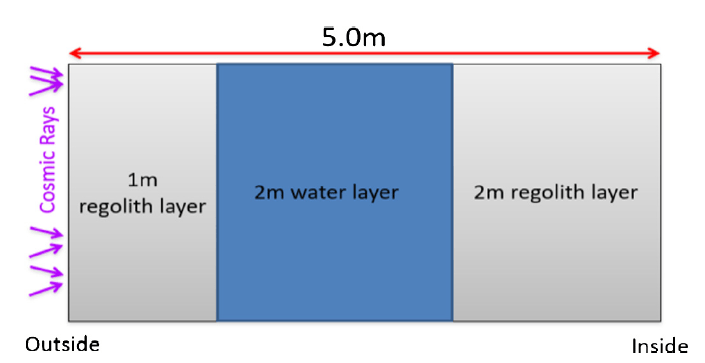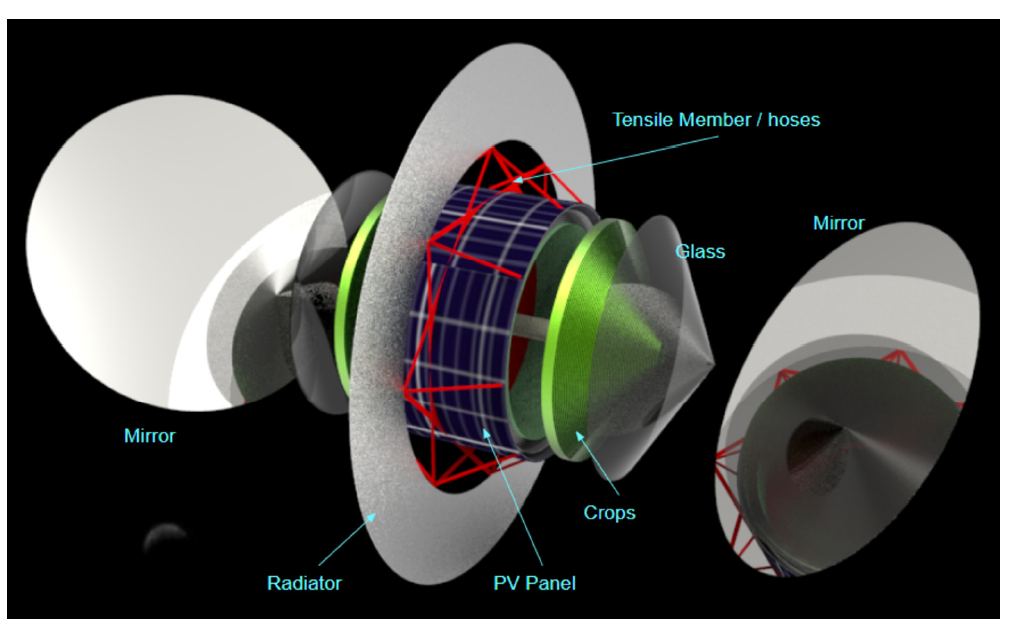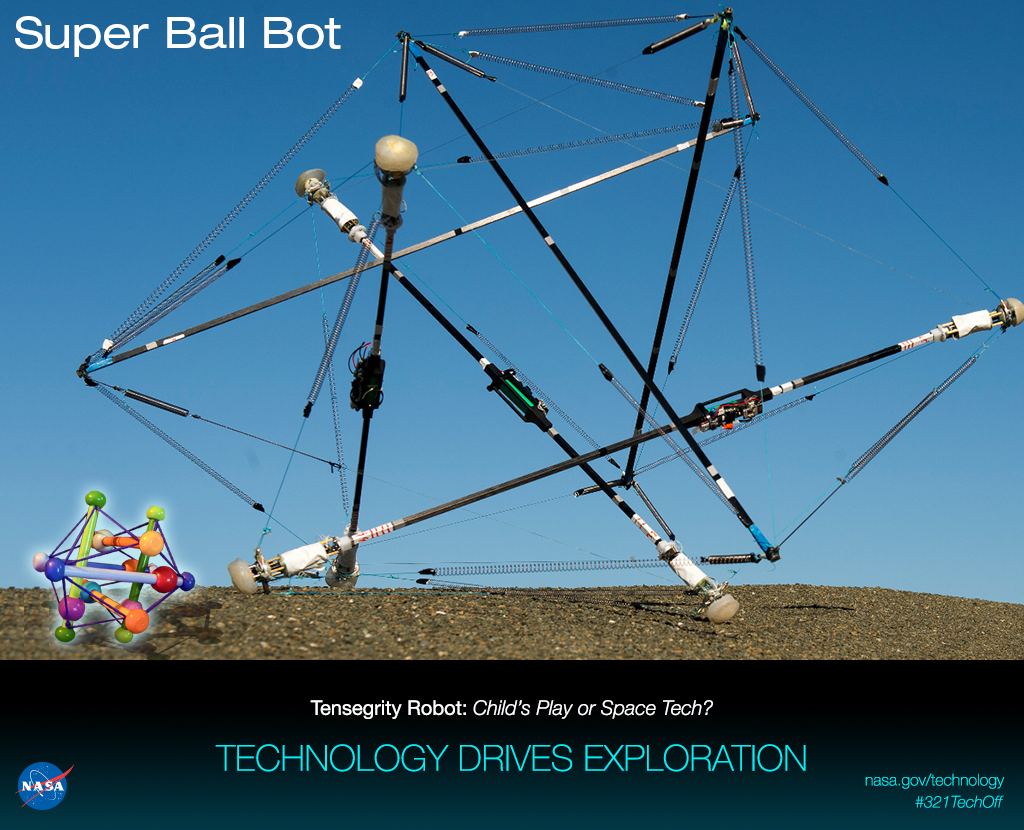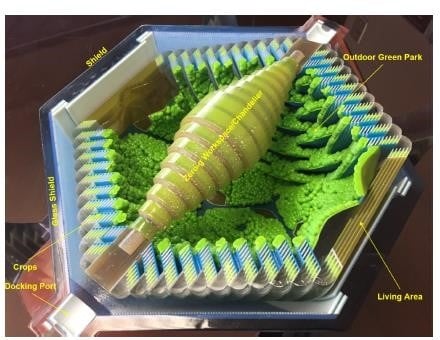There are two main approaches that humanity can take to living in space. The one more commonly portrayed is of us colonizing other celestial bodies such as the Moon and Mars. That approach comes with some major disadvantages, including dealing with toxic soils, clingy dust, and gravity wells.
The alternative is to build our own habitats. These could be located anywhere in the solar system, could be of any size that material science allows, and have different characteristics, such as temperature, climate, gravity, and even lengths of day. Unfortunately, we are still a very long way from building anything like a fully sized habitat. However, we are now one step closer to doing so with the release of a paper from a team at Texas A&M that describes a way to build an expandable space habitat of concentric cylinders that can house up to 8000 people.
Any habitat that houses that many people will have to deal with some major downsides of living in space. The paper's authors' explicitly list 5 that their space habitat design was trying to address:
- Gravity
- Radiation Protection
- Sustainable Agriculture
- Habitat Growth Capability
- Commercial Value
Long term exposure to lack of gravity wrecks havoc on human bodies, causing everything from vision impairment to bone density loss. Most of these problems are solved by a single elegant solution: artificial gravity.
We don't have the technology (yet) to allow Captain Picard to stand on the bridge of the Enterprise like he was standing in an office building. However, we do have something that approximates artificial gravity: centrifugal force caused by rotation. This is a pretty common solution to providing astronauts with something equivalent to gravity. That solution hasn't been tested, but most experts agree that it should alleviate most of the health problems associated with lack of gravity.
There are two major design considerations when making an artificial gravity system that would eliminate those health problems. First deals with the size of the habitat inducing the artificial gravity. If the radius of rotation is too small, there can be a significant difference in perceived gravity between a person's head and their feet. This has been known to cause motion sickness, and would make any habitat that induced that effect in its occupants unusable.
Space habitats could someday grow to the size of continents, and potentially use the same sort of expandable design described in the new paper.Credit: Isaac ArthurThe second consideration focuses on rotational speed. The authors point to a paper that points out that any rotational speed of more than 4 RPM would also induce motion sickness. Using the upper limit of rotational speed and the lower limit of radius of rotation yields a radius of 56 meters, about as tall as the Leaning Tower of Pisa. A human could possibly live on such a habitat without the induced motion sickness of a carnival ride, and without the negative health impacts of constantly floating in zero-g.
Zero G is not the only hazard the authors have to design around. Long term radiation exposure is extraordinarily bad for humans, with significantly increased risks of cancer and cellular damage a very real likelihood of any extended stay in space.
The author's solution to this hazard is a simple one - surround the entire habitat with 5 meters of regolith and water. In their model, the water is sandwiched between the regolith. The protective layer would be located in what they call the "shield". It would be located on the outside of the cylindrical habitat and covered in solar panels to power the habitat. The composition of the shield was selected primarily based on easy access to materials - regolith and water are abundantly available from places with relatively low gravity wells (ie asteroids and the Moon). The combination is also well know to stop both cosmic rays and solar radiation.
In addition to stopping any potential radiation, the shield aides the life support system by rotating very slowly in an effort to dissipate some of the thermal gradients present on the habitat's structure. The author's calculated with a .2 rpm rotation of the shield, and an extensive "radiator" attached to the side of the habitat, they can achieve approximately a 300K (27C / 80F) internal temperature in the habitat.
That internal temperature would be well received by the habitat's proposed non-human occupants - plants. The farms of the habitat would be placed at either end of the cylinder in a conical shape, and topped by a transparent glass ceiling. They would also be serviced by giant mirrors that are slightly askew, reflecting sunlight evenly to the agricultural surface.
The authors calculated that each occupant of the station would need approximately 300 m2 of farmland to support them. With an expanded habitat growing out to a radius of 224m (52 separate 4 meter high floors with a 20 meter innermost cylinder) there would be enough agricultural and living space to house 8000 people.
But the habitat wouldn't start out being able to support all of those people. The 20 meter radius innermost cylinder could serve as a "seed" module that other cylindrical layers build off of. And that building process would use a tried and true technique of mechanical engineering - tensegrity.
Tensegrity is a portmanteau coined by Buckminster Fuller to describe a system of interwoven bars and strings where the bars are compressed and the strings are tensed. It allows designers to build some truly incredible structures, not to mention the spectacular pieces of furniture that some Youtubers
In terms of a space habitat, it allows the designers to develop a 6 step expansion plan that can be repeated indefinitely without the need to turn off life support systems as the habitat is expanded. Each expansion allows for an additional cylinder to be added to the complex, and adds significant amounts of additional living space without disrupting the lives of the people living in the cylinders that are already installed. Such expandability would make any structure that uses this system much more economically interesting than a habitat that must maintain a single shape. That economic factor is an extremely important part of any future design plans, as it will be the main driving factor behind expanding space infrastructure more generally.
Another way to get economic value would be to leverage one of the interesting features of this style of cylindrical habitat. The center of the cylinder could act as a "zero-gravity workshop" which would allow occupants to perform work that might be difficult or impossible in a gravity well, such as processing raw material or developing new types of pharmaceuticals.
The central cylinder could also play a major role in a different economic driver for the habitat - tourism. The designers plan a central open space that is almost entirely devoted to parkland. This would partially be for the emotional and psychological well-being of the habitat's long-term occupants, but could also serve as a major tourist attraction. That would be particularly useful as tourism will likely serve as one of the major driving economic forces of early space habitats.
That tourism is indeed still a long way off, and while launch costs are continuing to drop, until we have the infrastructure in place to mine asteroids or the moon it is unlikely that any major space habitat will be built. In the meantime, we can continue to work on novel ideas that we might eventually be able to execute on. If only we didn't have to spend so much to escape our own gravity well.
Learn More:
Aerospace Science & Technology: Design and analysis of a growable artificial gravity space habitat
Isaac Arthur:
 Universe Today
Universe Today

